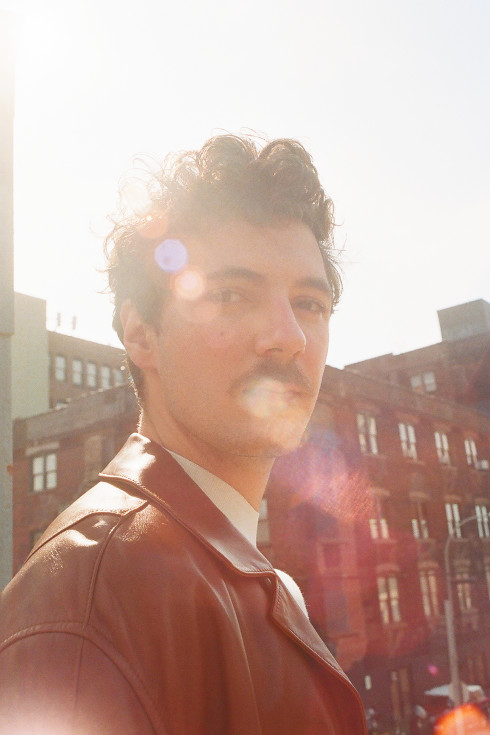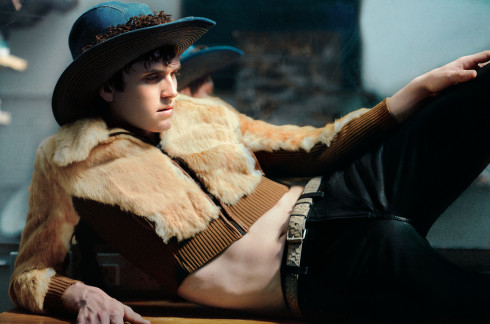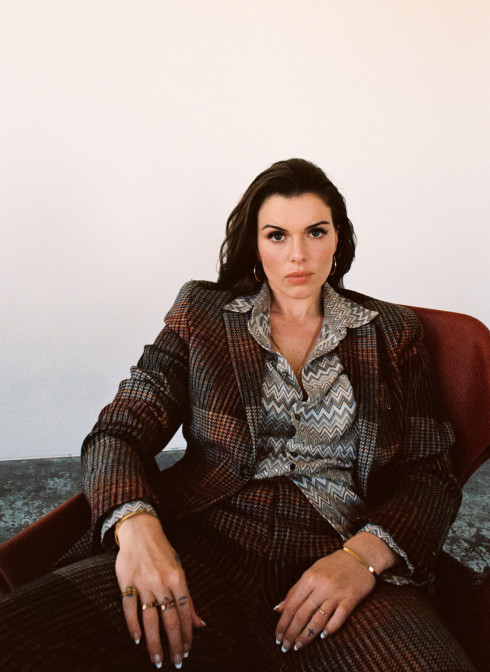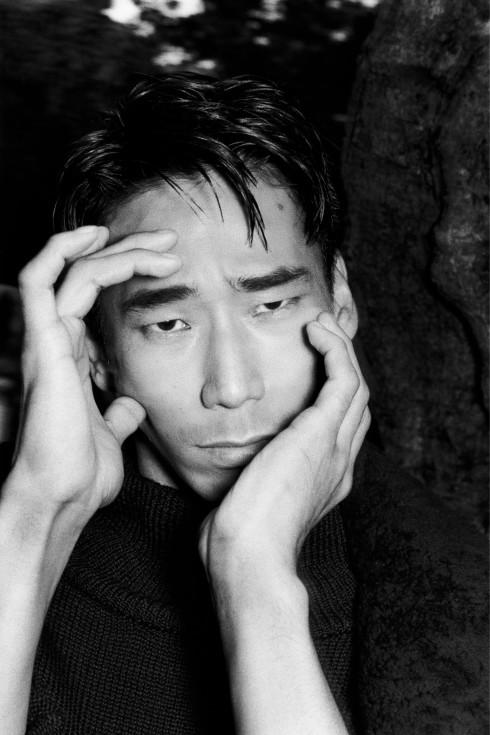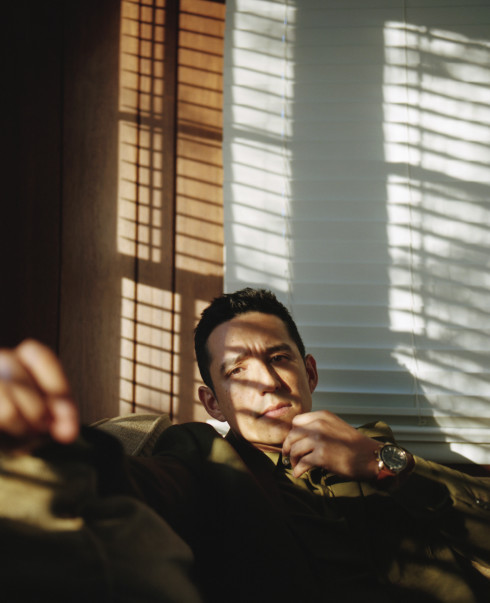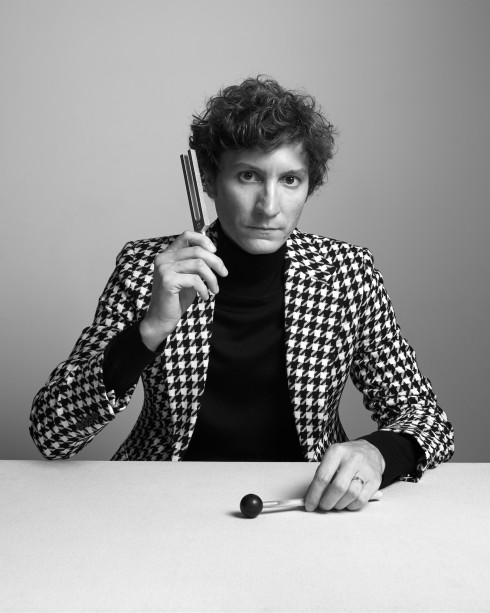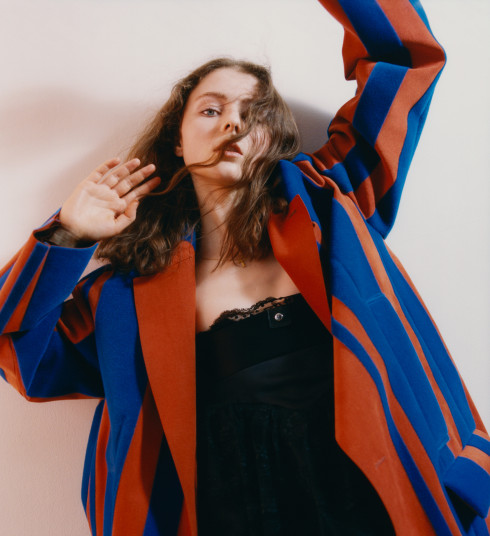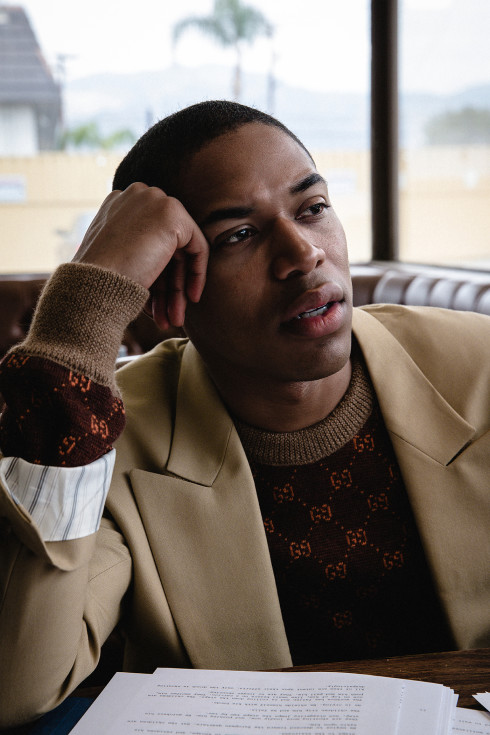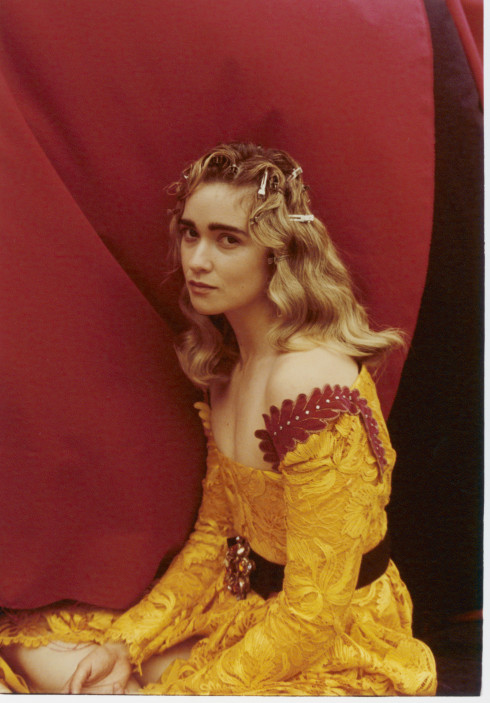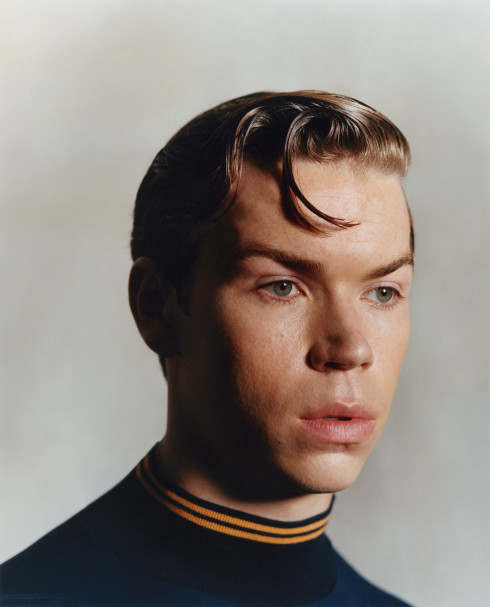
All clothing through by Dior Men.
- By
- Jonathan Shia
- Photography by
- Jennifer Cheng
- Styling by
- Zadrian Smith
Grooming by Josh Knight at Caren Agency using Moroccanoil and Bobbi Brown. Photographer’s assistant: Neil Payne. Stylist’s assistants: Brillant Nyansago and Jane Chanakira.
Patrick Gibson Is Ready for Anything
Among the four-hundred-plus scripted series coming to screens this year, there is not one that comes anywhere close to matching the singular experience of watching The OA, Brit Marling and Zal Batmanglij’s supernatural mystery about near-death experiences and alternate universes which returned to Netflix for a second season a few weeks ago. With an arresting blend of mysticism, religion, and science, the show is powerfully confounding, richly emotive, and rewardingly fearless in its refusal to offer easy answers. Marling stars as Prairie Johnson, the eponymous “Original Angel,” a traveler between parallel existences who awakens in the body of Nina Azarova (the birth name of Prairie, who was adopted as a young girl) in a 2016 in which Joe Biden is president in the new season’s premiere. Having established Prairie’s past—in brief, she was kidnapped and held captive for seven years by a doctor, Hap (Jason Isaacs), who performed experiments on her and four others who had also survived near-death experiences in the belief that it gave them access to other dimensions—in the first season, Part II unfolds a technological conspiracy involving a smartphone game that attracts addicted players to a house on the top of San Francisco’s Nob Hill in an attempt to unlock its supernatural secrets, audaciously widening the scope of the show without sacrificing the idiosyncratic tone that makes it so compelling.
Prairie’s inter-dimensional journey was facilitated by a group of four high school students and a teacher, whom she taught an intricate series of Movements that, when performed together by five, can open up a passageway from one world to another. One of the teenagers, Steve, is a somewhat-reformed troublemaker who has become Prairie’s most vigorous defender. Played by the 24-year-old Irish actor Patrick Gibson, Steve is brooding and impassioned, approaching everything with striking intensity and magnetic abandon. “When I first got the audition through, it was only the sides of the characters and an early scene but there was something that it was hard to put my finger on,” Gibson recalls. “I could really feel that there was a character there that felt really human and really natural and something about it just connected. Sometimes you just find something that you can’t really put words to but that really connects emotionally and that was it with Steve.”

It was only after he landed the part that Gibson began to get some understanding of what exactly it was he had signed up for. A fan of Marling and Batmanglij’s since their Sound of My Voice—he remembers a complex handshake from that 2011 film as vividly as viewers of The OA do the Movements, choreographed by Sia favorite Ryan Heffington—he says he felt forcefully compelled by the scripts he received, even if he didn’t quite understand them at first. “After I started getting more and I realized what the project was, I couldn’t quite believe it,” he says. “I’d never really read anything like it, so I was trying to place it in my mind.”
The draw of The OA was so strong that he decided to leave Trinity College in Dublin, where he had been studying philosophy, to film. “I don’t think I actually dropped out,” he laughs. “I think I might’ve just not told them that I was leaving and eventually they were like, ‘Yeah, you just can’t come back. That’s ridiculous.’” He quickly confirmed that he had made the right decision. “Brit is incredible,” Gibson elaborates. “Her character asks our characters to take a leap of faith and believe what she’s telling them and that’s really what she’s doing with us as well. She’s an incredible mind and for her to have this whole universe in her head, it brings it to life when you’re then shooting with her.”
Anyone familiar with the work of Marling—who co-wrote and -produced three startlingly varied and fascinating films in a row that all premiered at Sundance—will not be surprised that The OA is a show that is unafraid to take risks, willing to stretch the edges of our imagination in order to expand the limits of our understanding. The Movements, which have the air of contemporary dance, are one example. In other hands, they could easily appear overblown or melodramatic, but here they feel emphatically necessary, a vital ingredient in a series full of wonder. In one heartbreaking scene, Steve repeats them alone for hours in an attempt to rescue a friend who has died of a drug overdose, his actions driven by a mix of determination and desperation. “It is quite a jarring thing. It’s not something that we’re used to seeing in that capacity,” Gibson says about the Movements, which have inspired a number of fan videos and even a protest at the Trump International Hotel. “I don’t have any dance background or anything. I came at it pretty much a complete noob, so it was really exciting to get to do something like that. I think screen acting especially is quite an internal thing and it’s easy to get caught up in your own thoughts and your own emotions. Everything is quite contained, so to be able to do something where you break out and you get to use your entire body and movement really unlocks something emotionally that I hadn’t experienced before.”

The show also offered Gibson another first, the opportunity to revisit a character. He has appeared in a number of other projects since wrapping the first season, including the period miniseries The White Queen with Jodie Comer and the young-adult dystopian thriller The Darkest Minds alongside Amandla Stenberg and Harris Dickinson, and admits that it was somewhat of a challenge to revisit Steve two years later, for multiple reasons. “It was daunting in a way because when you’re doing a character on set, nobody’s seen it before and it’s this sacred thing almost,” he explains. “I sort of forget that people are ever going to see it. You kind of feel like you’re just making it for yourself and you can go about the rest of your life until you realize it’s coming out tomorrow. It’s odd having the chance to watch it and see the character that you played and then know that you’re going back in to do it.” Gibson recognized the changes he had undergone himself in the time between as well, taking a parallel journey alongside Steve that is sure to only bring more layers to his performance if, as planned, Marling and Batmanglij are able to fulfill their five-season plan. “The second season, our portion is set only two weeks after where we left off in the first season, and yet, in reality, two years had passed,” he says. “Naturally, there is a change in anybody over that period of time so it’s really interesting returning to a character after that amount of time. But also I think Steve as a character had such a huge life experience that happened at the end of season one that I think it’s natural that he’s changed and is on a different path. That was an interesting thing to play with, what I learned as a person over two years and what Steve had learned as a person in those two weeks.”
Gibson has been pushing himself in new directions apart from The OA as well. In December, he made his stage début at London’s Donmar Warehouse in Lynn Nottage’s Pulitzer-winning Sweat, a play about steelworkers in the declining town of Reading, Pennsylvania, that was lauded during its New York runs from 2016 to 2017 for illuminating the mindset of the working class for a largely liberal, intellectual theatergoing public during and after an intensely divisive election. “There was a lot to learn about what it means to grow up knowing that you’re going to go and work in a factory and that you’re going to provide for your country and your nation and the enormous pride that comes with that,” Gibson recalls, noting that the cast and crew toured steel mills in England to help understand the characters. “The people who were taking us on the tour were retired guys who worked in the factory, so the fact that they would come back and they wanted to show what this place means was really special,” he adds. “It was also really tragic then when you realize how much the people in the play are made to feel like they’re not important and that they don’t matter and that they’re not valued because of the politicians. It’s also just an incredibly human story really. Although it has a political framework—the backdrop of it is the deindustrialization of America—I think the scenes of it are so human and so familiar to us no matter where you’re from.”

Even though he has been acting since childhood—his first role came in a short film at the age of six or seven, followed by a number of commercials and a small role on The Tudors as a teenager—Gibson admits to still getting nervous when performing in front of people, one of the reasons he says he sought out a part in Sweat. “I suppose on set when you’re filming, you are performing in front of people,” he says, “but it doesn’t really feel like it in the same way so it was something that I thought that I really wanted to do for myself.” Unlike many Irish actors, the stage has not played a major part in his background. An early breakthrough came with a supporting part in Lenny Abrahamson’s 2012 coming-of-age drama What Richard Did, but Gibson says he rejected drama school for philosophy studies and didn’t decide to pursue acting head-on until years later, with The OA. “Now I can’t imagine ever doing anything else,” he says. “I love it more than anything.”
Forming a diverse trifecta with The OA and Sweat, Gibson will also be seen later this week in the biopic Tolkien, starring Nicholas Hoult as the Lord of the Rings author and Gibson, Tom Glynn-Carney, and Anthony Boyle as his fellow members of the Tea Club and Barrovian Society, a semi-secret creative salon the four young men formed as teenagers growing up in Birmingham before World War I. As Robert Gilson, a budding painter who would be killed during the Battle of the Somme, Gibson plays a real-life person for the first time, which offered both opportunities and risks. “When I started looking into him after I got the script through for the audition, I realized that he had written letters every day back home or to his sweetheart Estelle and I got a real clear insight into who he was as a person, not just what he was doing day to day but a real sense of who he was,” he recalls. “It’s a real responsibility in a way I think when you play a real person to honor who they were and be true to that, but at the same time, there’s an awareness that we’re making a movie and that this is a character as well. There’s an interesting alchemy where you bring yourself to it and then elements of what we know him to be through those letters and things. It’s an interesting melting pot and I think that’s what creates interesting characters, when you have those dualities and things that don’t quite add up or are almost contradicting in characters.”
For now, Gibson says he is taking a few weeks to relax before heading back into rehearsals for Sweat, which is set for a West End transfer this summer. After performing in the round at the Donmar, he says the move into a standard theater will be another new experience. “It’s going to be strange going to a more conventional stage but feeling slightly less at home if that makes sense,” he laughs. But it’s clear that, as with everything before, he is relishing the prospect of setting a new challenge for himself. “What I wasn’t quite prepared for was how different every night really does feel. It’s almost a cliché—you hear people say it so often about theater but every night really truly is a completely different show,” he says. “It’s exhilarating but also the uncertainty of it can be a daunting thing, to not quite know what it’s going to feel like when you go out on stage or how you’re going to feel in the performance that night. That was something that I had to adjust to in the first couple weeks, just getting used to riding the rollercoaster that it is and letting go, especially when there’s that many people there, but once I got there it was really an incredible feeling to go out and be able to do that every night.”
The OA is now streaming on Netflix. Tolkien is out May 10. Sweat opens at the Gielgud Theatre, London, on June 7.

- By
- Jonathan Shia
- Photography by
- Jennifer Cheng
- Styling by
- Zadrian Smith
Grooming by Josh Knight at Caren Agency using Moroccanoil and Bobbi Brown. Photographer’s assistant: Neil Payne. Stylist’s assistants: Brillant Nyansago and Jane Chanakira.
